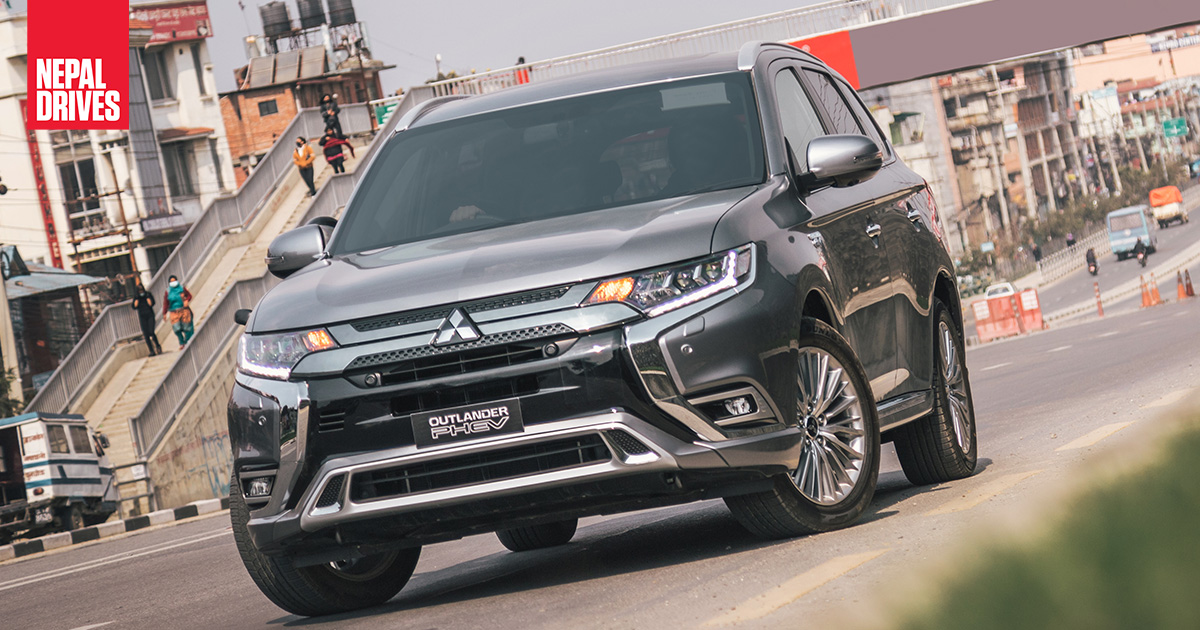We are positive that by now everybody believes that the future of mobility is electric. We’ve all seen it, we have all come to accept it and fossil fuel loyalists will all have to live with it. It is the inevitable future we’re all headed to and we should head to if we are to care for our planet. Now, we don’t have any problem with electricity as a means of propulsion, but how will it be done? More importantly, how long will it take to set the electric network up for this to happen?
Human beings have relied on fossil fuels for centuries, our entire network of mobility has been built on that foundation. Jumping into a completely new frontier brings its own hassle and shortcomings, especially in a country like ours where we don’t even have a well spread-out fuel network, laying the groundwork for a mesh of infrastructure dedicated solely to electric vehicles will not only cost money but also take years on end to establish and run properly.
Early adopters are jumping on the EV bandwagon, no doubt. But, what do the rest of us do? The answer? Hybrids, mainly Plug-in Hybrids. A PHEV or Plug-in Hybrid Electric Vehicle is basically a vehicle that has an engine, preferably petrol but also has a small battery and motor in the same car. The EV component is there to add efficiency to the engine and help with performance.
Carmakers believe that, until full electrification is achieved, PHEVs will give you the ultimate mid-point between the present and the future. Today we have one such car with us, the Mitsubishi Outlander PHEV. The Outlander PHEV has come into Nepal carrying a repertoire on its back of consistently ranking as one of the best-selling plug-in hybrids in Britain. Let’s see if this car can replicate the same magic here and plug the gap that connects the past with the future.
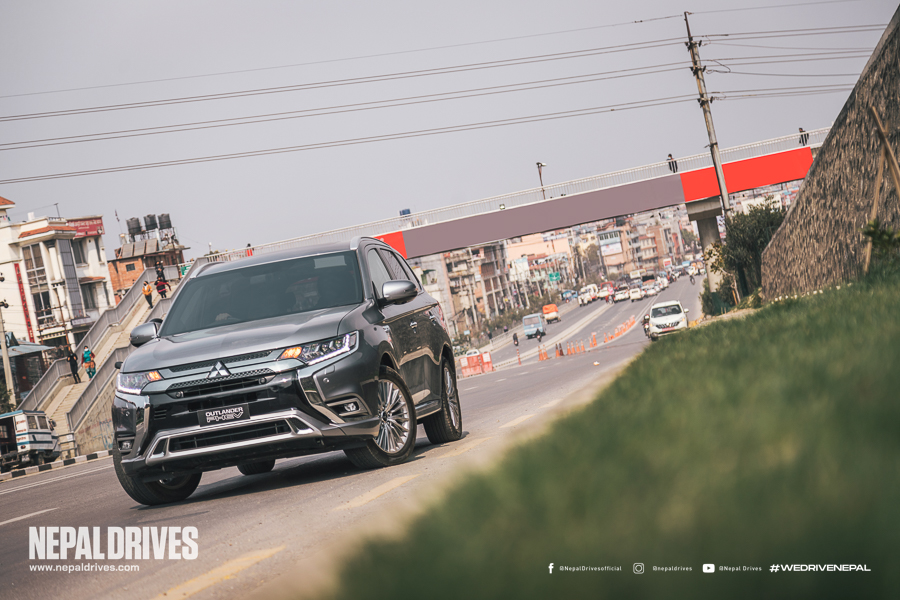
Exterior
The Outlander has been around for a very long time and has always been a decent looker and the PHEV is no exception. This Outlander, however, is older than all of Mitsubishi’s other cars available in Nepal, younger only than the big daddy Pajero. So, it is very obvious that the car is starting to grow old and the PHEV does little to bring any freshness to this ageing design.
[nd_gallery images="33488,33481,33480"]This little whiff of fresh air comes in the form of bumper and skirt extensions all around to make the car look as if it’s sitting lower. Reprofiled headlights and taillights, a new elegant set of 18-inch alloy wheels and PHEV badging on the sides and the rear. The Outlander PHEV has taken the “if it ain’t broke don't fix it” route with a big emphasis on the “don’t fix it” part. One thing we love, however, is how the Outlander PHEV doesn’t have elements in the exterior that doesn’t come right up to your face and screams that it is tree-friendly. It is bold, elegant and understated and even though it has aged, it has aged like a fine wine and we like that a lot.
Interior
Inside, the cabin is where you will realise that the years have not been as kind to the interior as it has to the exterior with the Outlander PHEV. You get an all-black cabin with faux carbon fibre trims housed on the door, front console and dashboard. The dashboard and the doors both come with a plush soft-touch finish on the top, and the quality is great. The choice of material is admirable and one thing an aged cabin gets you is a robust fit and finish. Everything in here feels sturdy and built to last.
The dashboard houses the 8-inch infotainment unit that has been angled towards the driver. This infotainment system is probably the biggest letdown in the entire car. It is just old; it is not intuitive and is slow to respond. The capacitive hotkeys for power, volume and other controls don’t work when you want them to.
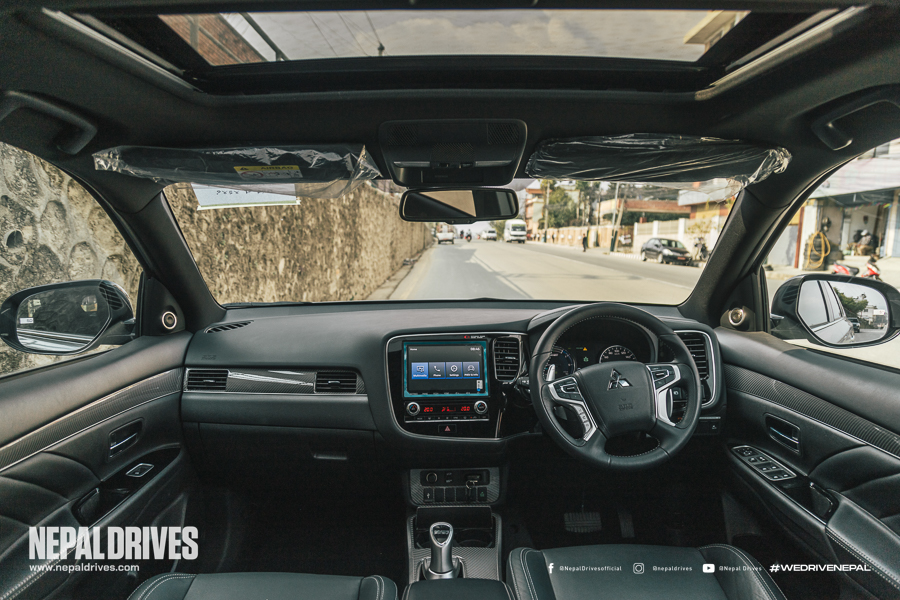
The quality of the screen isn’t even on par with vehicles three segments below and the rear-view camera is the worst among the cars we have reviewed for this issue. And when you are paying a sum of money that starts with a crore, all these problems amplify and are quite frankly, disappointing. Mercifully, you get Apple CarPlay and Android Auto smartphone integration as standard, so you can avoid using the native user interface.
Coming down to the front console, it houses a new gear lever finished in silver that looks out of place really, we would have loved to see a rotary dial. The console also gets switches for the electronic parking brake, auto hold, twin motor, sport mode and controls for heated seats for the front two passengers. Storage spaces in the Outlander PHEV include a large glovebox, a storage cubby on the front console, door pockets and a large boot that has an electronic tailgate.
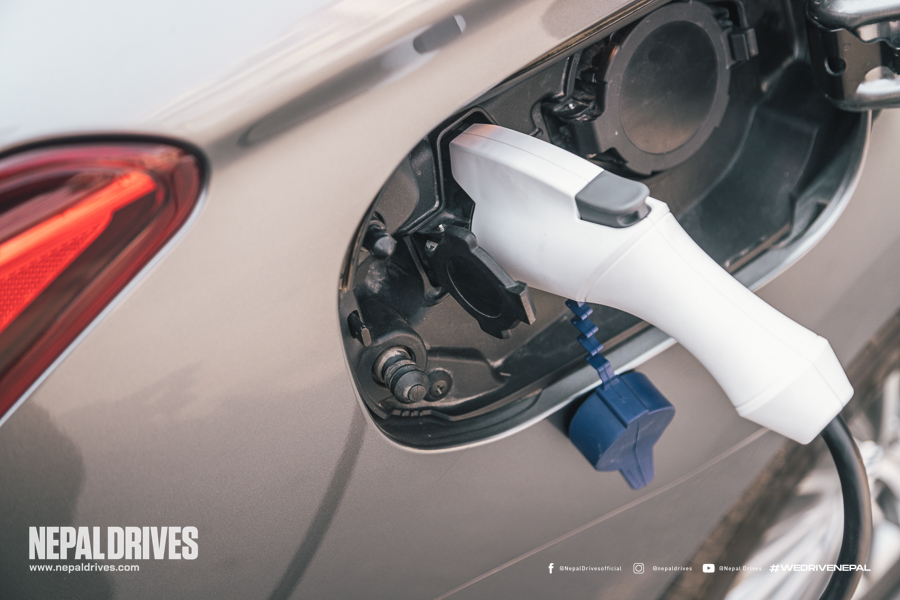
The seats of the PHEV bring back some points otherwise lost to the dreary infotainment system. These seats are great, they come with adequate cushioning and hold you in firmly. The driver seat comes with tons of electronic control so finding a great driving position is easy. The driver and co-driver get heated seats and their own climate adjustment for added convenience. The rear seat houses 3 adults with ease and you won’t be hearing any complaints about long drives.
Performance
The drive is where the PHEV comes back with a bang. The PHEV is powered by a naturally aspirated 2.4-litre petrol engine that makes 133 bhp and 199 Nm of torque. The hybrid setup further adds to the power which then totals out at around 220 bhp. The car can be driven by its engine or by its electric motors and batteries alone, or by a combination of the two. Mitsubishi has also fitted switches to the centre console that allow you to make those decisions for yourself; you can dictate when to recharge the batteries, when to use electric drive only and when to ensure all four wheels are being driven.
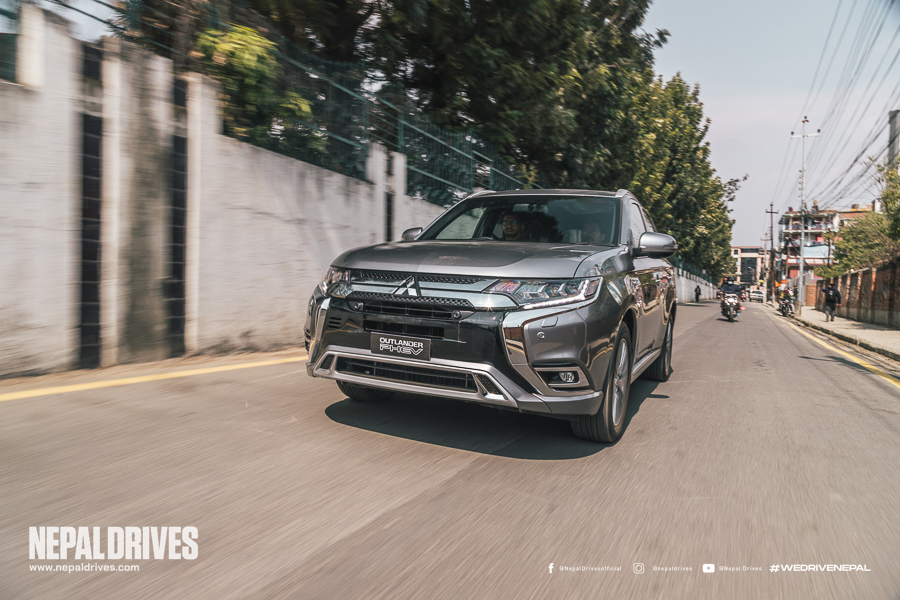
Despite being powered by a combination of two battery-driven electric motors and a conventional four-cylinder 2.4-litre petrol engine, the PHEV actually feels remarkably ‘normal’ to drive. There's no need to change gear – just a seamless delivery of power; the onboard brains decide when the electric motors should either contribute to your progress and when they should turn themselves into generators to recharge the battery.
The petrol engine will only kick in when you ask for extra acceleration or the batteries are depleted. Most of the time, you’ll barely notice the car swapping around between the two power sources. It is only when you mash the pedal that you’ll be able to hear the engine grunting. Otherwise, the silence is almost electric. Those batteries can be charged on the move by the petrol engine, or the car can be plugged into the mains to charge overnight or can fast charge in 25 minutes should you plug it into a DC charger. The battery-save mode is particularly useful if you commute into a city, as you can use the petrol engine on the highway and then switch to electric power once you enter the cities.
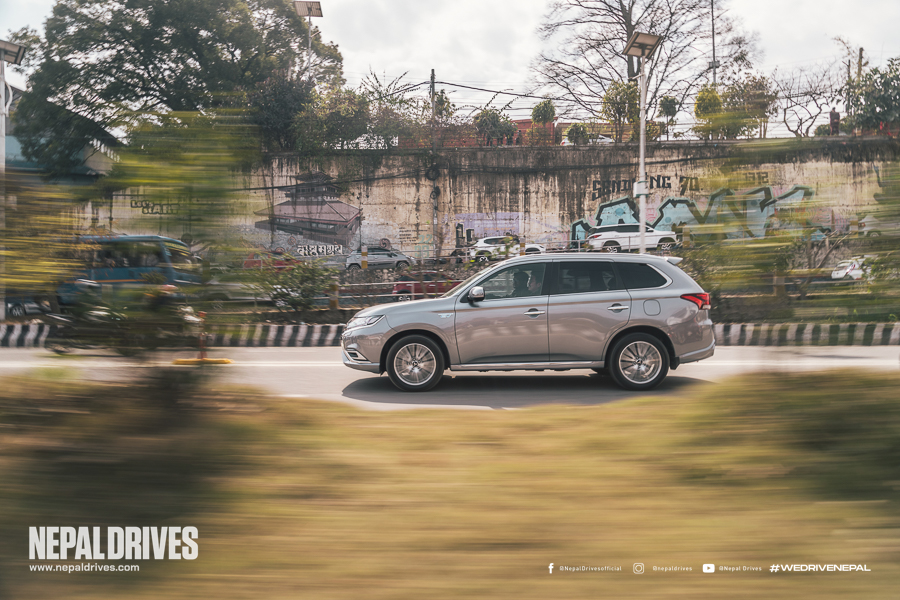
Because the Outlander PHEV can run on pure electric power, many commuters will be able to travel to work and back after an overnight charge, using no petrol at all. As a result, under the WLTP testing cycle, the car is rated as being able to travel 45 km on pure electricity alone, and should be able to return an incredible 50 km/l in mixed-use. So, if most of your motoring life is spent on short journeys and you charge the batteries every night, you’ll barely use the petrol engine and may manage more than 35 km/l.
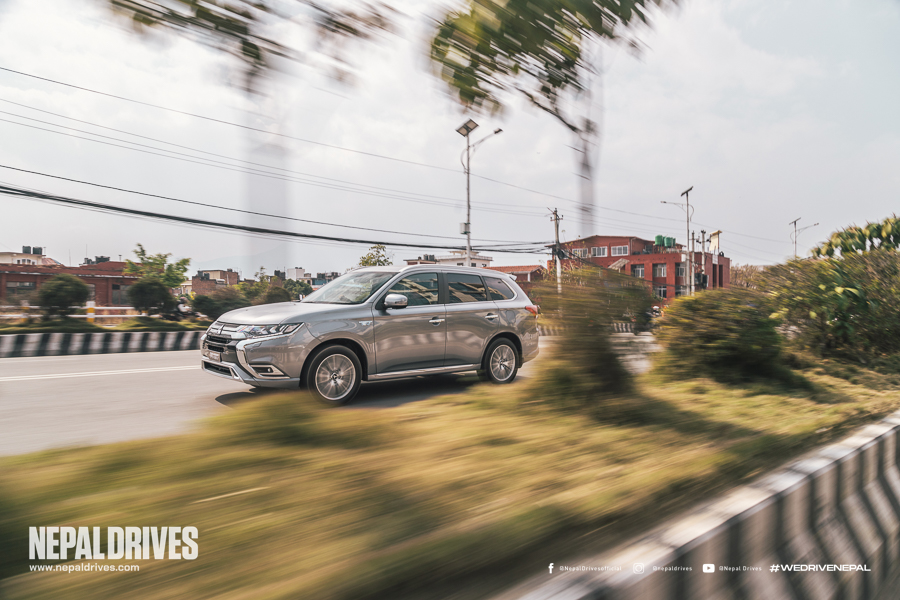
The refinement of the Outlander PHEV is impressive. At low speeds, electric motors do all the work of moving the car. And on highway speed, the car can do 0 to 100 km/h in 10.5 seconds giving you more than enough performance for your daily needs. The Sport driving mode sharpens the car’s throttle response and adds weight to its steering, but it doesn’t necessarily make the PHEV any more thrilling to drive. The same goes for Outlander’s handling. The PHEV’s soft suspension results in a more supple ride and at higher speeds, the PHEV does a reasonable job of dealing with a wavy road surface, but sharp abrasions such as expansion joints and potholes send impacts through the interior. This is a car that’s at its best when wafting along at a relaxed and comfortable pace.
Verdict
The Mitsubishi Outlander PHEV carries a price tag of Rs. 1.55 Crores which, we’re not going to lie, is a lot of money. But, is that price tag justified? Well, yes and no. The Outlander PHEV brings an elegant exterior that looks handsome but is soon going out of fashion. And it brings an interior that frankly, is already out of fashion. But what it does bring is the best of both worlds – fuel and electricity.
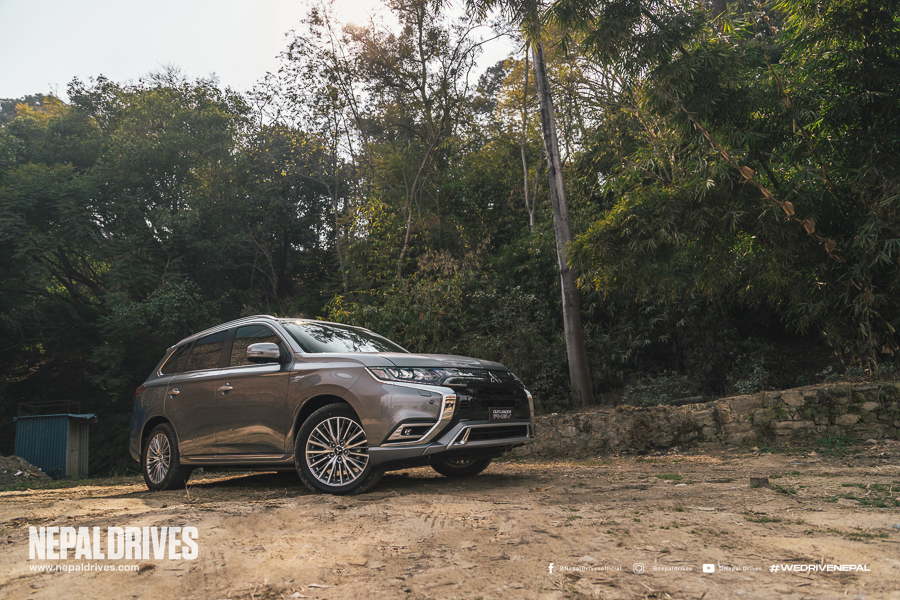
The seamless and luxurious drive of the Outlander PHEV that rivals European cars scores major points. The optimal efficiency of the powertrain and the thought of never having to use petrol while driving around town but also the reassurance of fuel when you run out of battery strikes a perfect balance between being planet-friendly and being mobile at all times. For that, we think that the price tag it carries is well justified. But with the all-new Outlander and its PHEV cousin have already been unveiled to the world, we will let you decide where to put your money.

Riddara RD6: The EV Truck That Redefines Everyday Practicality
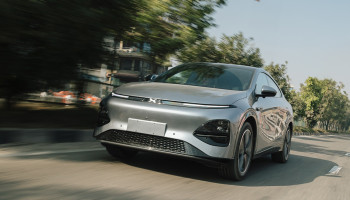
Xpeng G6: Sophistication at a Bargain
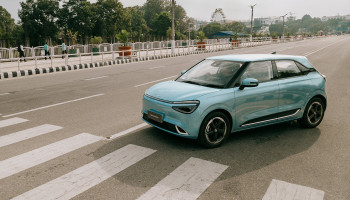
Dongfeng Nammi: Delivering More for Less



